There is a whiff of old-school science fiction in this watch, which resembles a wrist-bound communicator to a mother ship. The Tibida lets wearers tell time three different ways. "Minute-centric mode" has the minutes themselves appear scoreboard-style in the lower, two-sided display - if it is 22 minutes past, the lights form two twos; if nine past, then you see a zero-nine. The hour is marked off in the top display that has 12 spots. "Hour-centric mode" just swaps the hours for the bottom and minutes for the top, though this mode only has a minute resolution of five minutes, naturally, and is for when actual minute-to-minute time is unimportant. The third mode displays the time in a binary digit format using only the 12-unit top display. The way this works is that from right to left, the six columns stand for one, two, four, eight, sixteen and thirty-two. The top row is the hour and the bottom row is minutes. So if the second and fourth lights from the right in the top row are lit, it is 10 o'clock (8 + 2).
As with most Tokyoflash watches, telling time on the Tibida is not something the wearer will be doing in no time flat.
Telling time has come a long way from the sundial and the hourglass. Nowadays a lot of timekeeping occurs courtesy of the digital clocks like those found on your cell phone or computer - an uncomplicated, yet dull row of three or four numbers. Traditional, wall-mounted analog clocks with hands remain popular too, showing that how we keep track of the passing minutes has remained much the same for decades and even centuries.
But some companies are trying to spice things up. In Japan, Tokyoflash has taken reading a watch face to another level of engagement and aesthetics. Some of their watches cannot even be identified as such by the casual observer, and require explanations about their unique workings.
By challenging the concept of how a timepiece might look, these watches also challenge the time teller's mind.
Here are some alternative watches from Tokyoflash that might just make the clichéd, bored gesture of glancing at one's wrist for the hour as quaint as a grandfather clock.
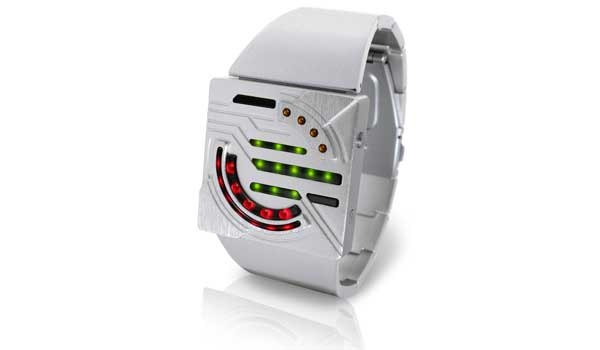
© Tokyoflash Japan
This lightweight aluminum watch offers an innovative, if perhaps trickier way to tell the time: As with many Tokyoflash watches, a bit of arithmetic is required, as well as a lack of colorblindness. Each LED color represents a different unit of time. Red represents hours; green is equal to 5-minute intervals; and yellow is single minutes. So for example, four shining yellow dots, six green dots and eight red dots broadcast the time as 8:34.
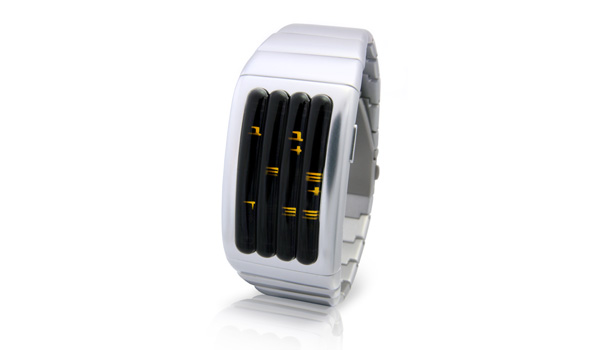
© Tokyoflash Japan
Elongated bubbles act as lenses to magnify the low-energy light that beams from a host of light-emitting diodes (LEDs) in the Keisan watch. To calculate the time and date, read across the four bubbles that have glowing numbers underneath. The numbers only go up to four, but a plus sign lets you know whether to add the numbers up. For example, in time mode (shown by a flashing "T" in the first column), you may read across "1, 2, 2 + 3, 3 + 4." Translation: It's 12:57.
Like other Tokyoflash watches, the Keisan comes with a programmed light display that dazzles for 12 minutes after the time is displayed. The Silver band and face color (black is also available) is shown here, and orange or yellow LEDs are offered.
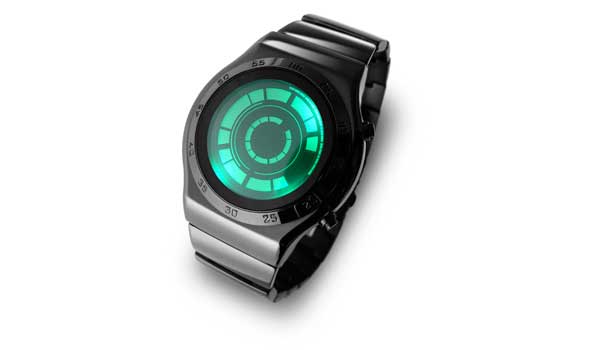
© Tokyoflash Japan
At first blush, the Rogue watch looks like a traditional timepiece with a circular face. But upon further inspection, its green face resembling a radar screen has no numbers. Instead, it features concentric rings broken up into different-sized chunks. The outermost ring of dots shows the minutes, and to aid in reading, every fifth minute is marked by a smaller dot. A gap in the middle ring that sports the largest blocks just helps give a rough approximation for where the tiny minute markers are located in the outer ring. In a hearkening back to standard clocks, the innermost band indicates the hour as it would appear if pointed to by an hour hand.
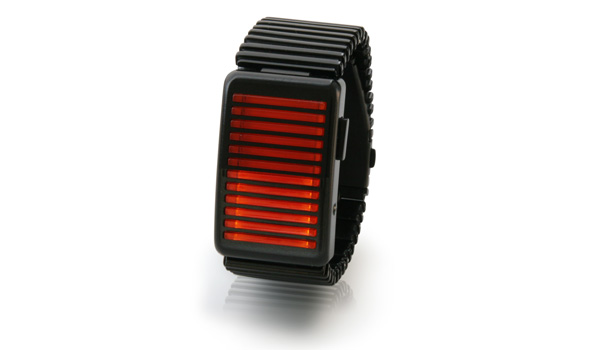
© Tokyoflash Japan
The orange bars on the Denshoku watch are meant to evoke the neon skyline of the busy Shinjuku district in Tokyo. (The word itself "denshoku" means "illumination" in Japanese.) When a wearer taps a button to learn the time, the minutes and hours flash across the 12 bars in three stages. First comes the hours - if 10 bars light up, it's 10 o'clock. For the minute details, the next stage serves up blocks of ten minutes, so if there are four of those, that means it's 10:40. The single minute tick-tocks come last, up to nine.
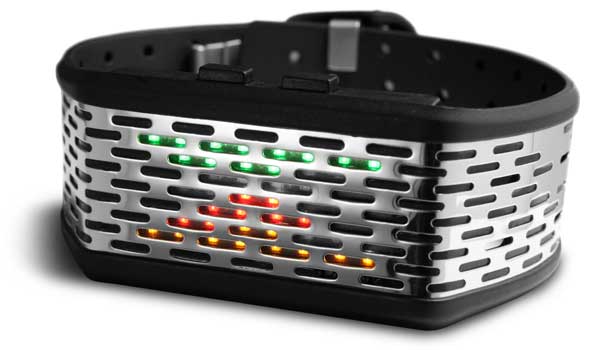
© Tokyoflash Japan
Precisely machined holes in stainless steel let the time-telling lights flash out in the center of this watch. These lights, when activated by pressing a button, form an X-pattern. Green represents minutes, red as groups of 10 minutes, and yellow represents hours. The pattern of gaps in the steel lines a plastic strap that wraps around the wearer's wrist.
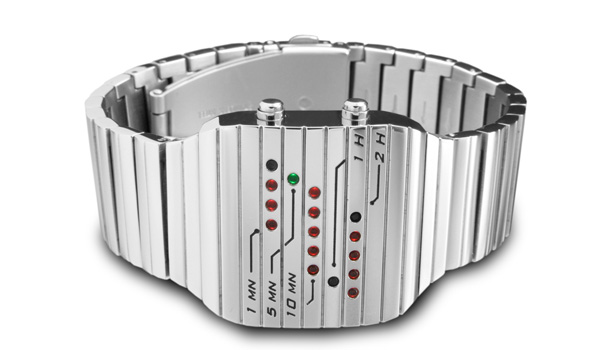
© Tokyoflash Japan
Unlike many other Tokyoflash watches, the minute and hour indicator lights on the Ni watch are clearly labeled. The watch face is still a bit cryptic, however, as the above example shows. The "2 H" row has four spots lit up, and the "1 H" has none, thereby establishing the hour as 8 o'clock. Five markers in the "10 MN" row are lit, as well as the one marker in the "5 MN" line, and three in the top "1 MN" row. Voila, it is 8:58, either morning or night, depending on one's context. Color options for the lights include all blue, all white and a mixture of red and green.
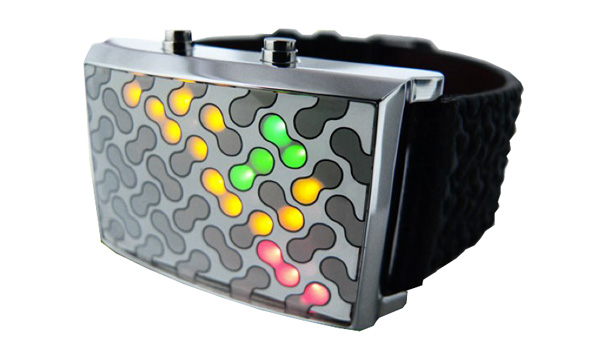
© Tokyoflash Japan
Tokyoflash makes limited batches of its products, so some watches including the Infection are no longer available from the company. Indeed, as Tokyoflash's Web page says for this watch, "no one is immune to Infection." Nearly 30 LEDs light up as multicolored blobs that ooze across the crystal panel of the watch face. The hours, five-minute chunks, and individual minutes appear as red, yellow and green, similar to the format of other Tokyoflash watches.
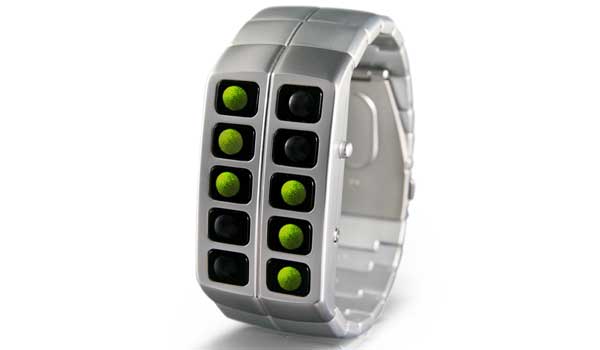
© Tokyoflash Japan
What looks like a futuristic, wrist-worn, weekly pill-minder becomes an illuminated timekeeping display at the touch of a button. When inactive, the Tenmetsu presents 10 dark, round acrylic circles. When the time is sought, more than two dozen LEDs combine to represent the time and date using red, green and yellow lights. In the case of Tenmetsu, red means a unit of 15 (minutes, hours or days, depending), yellow five, and green one. So if the first set of lights you see is a red, a yellow and three greens, it is 23 hours, or 11 PM. Month and date work the same way, though red, of course, does not occur in the 12-month display.
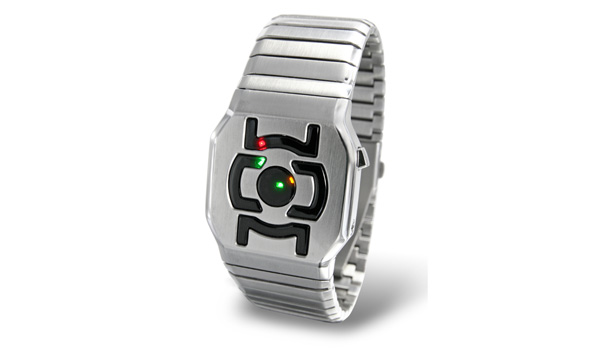
© Tokyoflash Japan
Even in a family of seemingly difficult-to-read watch faces, the Hanko presents more of a challenge than others. In blue, white or multicolored LEDs, the hour is shown in the center circle of the watch. In the outer circle formed by the four Asian character-like lenses that surround the center lens, a five-minute minute marker appears where it would on a regular clock. In other words, in the third slot at 90 degrees to the "top" of the Hanko, the five minute marker means it is 15 minutes after the hour. For the actual minute-to-minute between these five-minute increments, watch owners look to the four bottom points of the arch-shaped lenses that appear closest to the center circle. The lights appear here to show whether it is one to four minutes past the five-minute mark; no lights here of course means that the time in minutes presently ends in a five or a zero. While scrutinizing one's Hanko watch face, the whole concept of time may take on a certain profundity - or absurdity.
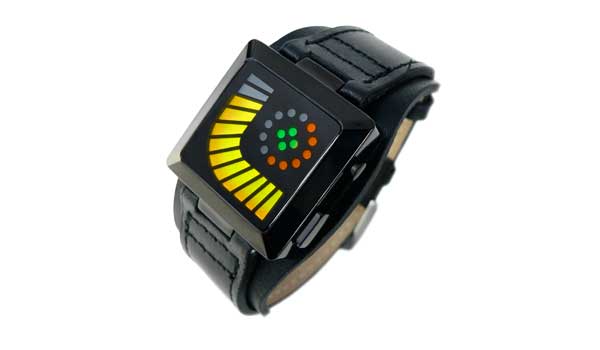
© Tokyoflash Japan
Though the Kyokusen has a conventional leather band, the face is classic Tokyoflash. The orange segments that curve around two sides of this watch indicate the hour. The bigger circle of red lights shows five-minute intervals, and the four dots that form the circle's hub show single minutes. The name, at least in the native Japanese, offers a slight clue to the time-telling technique involved: the word "kyokusen" means "curved line." This watch is also no longer sold by the company.
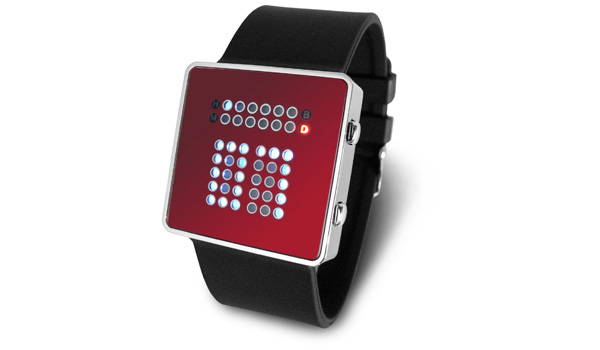
© Tokyoflash Japan
There is a whiff of old-school science fiction in this watch, which resembles a wrist-bound communicator to a mother ship. The Tibida lets wearers tell time three different ways. "Minute-centric mode" has the minutes themselves appear scoreboard-style in the lower, two-sided display - if it is 22 minutes past, the lights form two twos; if nine past, then you see a zero-nine. The hour is marked off in the top display that has 12 spots. "Hour-centric mode" just swaps the hours for the bottom and minutes for the top, though this mode only has a minute resolution of five minutes, naturally, and is for when actual minute-to-minute time is unimportant. The third mode displays the time in a binary digit format using only the 12-unit top display. The way this works is that from right to left, the six columns stand for one, two, four, eight, sixteen and thirty-two. The top row is the hour and the bottom row is minutes. So if the second and fourth lights from the right in the top row are lit, it is 10 o'clock (8 + 2).
As with most Tokyoflash watches, telling time on the Tibida is not something the wearer will be doing in no time flat.
Reader Comments
to our Newsletter